We need your consent to use the individual data so that you can see information about your interests, among other things. Click "OK" to give your consent.
ASTM D5992-96(2011)
Standard Guide for Dynamic Testing of Vulcanized Rubber and Rubber-Like Materials Using Vibratory Methods
STANDARD published on 1.5.2011
The information about the standard:
Designation standards: ASTM D5992-96(2011)
Note: WITHDRAWN
Publication date standards: 1.5.2011
SKU: NS-33351
The number of pages: 25
Approximate weight : 75 g (0.17 lbs)
Country: American technical standard
Category: Technical standards ASTM
The category - similar standards:
Annotation of standard text ASTM D5992-96(2011) :
Keywords:
apparatus, damping, dynamic, elastic, elastomer, guide, methods, modulus, rubber, spring rate, stiffness, testing: Damping, Dynamic analysis/testing, Elastomeric rubber materials, Modulus, Nonresonant vibratory data, Rubber, Spring rate, Stiffness, Vibratory methods, Vulcanized rubbers, ICS Number Code 83.060 (Rubber)
Additional information
| Significance and Use | ||||||||
|
This guide is intended to describe various methods for determining the dynamic properties of vulcanized rubber materials, and by extension, products utilizing such materials in applications such as springs, dampers, and flexible load-carrying devices, flexible power transmission couplings, vibration isolation components and mechanical rubber goods in general. As a guide, it is intended to provide descriptions of options available rather than to specify the use of any one in particular. |
||||||||
| 1. Scope | ||||||||
|
1.1 This guide covers dynamic testing of vulcanized rubber and rubber-like (both hereinafter termed "rubber" or "elastomeric") materials and products, leading from the definitions of terms used, through the basic mathematics and symbols, to the measurement of stiffness and damping, and finally through the use of specimen geometry and flexing method, to the measurement of dynamic modulus. 1.2 This guide describes a variety of vibratory methods for determining dynamic properties, presenting them as options, not as requirements. The methods involve free resonant vibration, and forced resonant and nonresonant vibration. In the latter two cases the input is assumed to be sinusoidal. 1.3 While the methods are primarily for the measurement of modulus, a material property, they may in many cases be applied to measurements of the properties of full-scale products. 1.4 The methods described are primarily useful over the range of temperatures from -70°C to +200°C (100°F to +400F) and for frequencies from 0.01 to 100 Hz. Not all instruments and methods will accommodate the entire ranges. 1.5 When employed for the measurement of dynamic modulus, the methods are intended for materials having complex moduli in the range from 100 to 100 000 kPa (15 to 15 000 psi) and damping angles from 0 to 90. Not all instruments and methods will accommodate the entire ranges. 1.6 Both translational and rotational methods are described. To simplify generic descriptions, the terminology of translation is used. The subject matter applies equally to the rotational mode, substituting "torque" and "angular deflection" for "force" and "displacement." 1.7 This guide is divided into sections, some of which include: 1.8 The values stated in SI units are to be regarded as the standard. The values given in parentheses are for information only. This standard does not purport to address all of the safety concerns, if any, associated with its use. It is the responsibility of the user of this standard to establish appropriate safety and health practices and determine the applicability of regulatory limitations prior to use. |
||||||||
| 2. Referenced Documents | ||||||||
|
Similar standards:
Historical
15.5.2014
Historical
1.5.2012
Historical
1.1.2012
Historical
15.12.2011
Historical
1.7.2009
Historical
15.5.2014
We recommend:
Technical standards updating
Do you want to make sure you use only the valid technical standards?
We can offer you a solution which will provide you a monthly overview concerning the updating of standards which you use.
Would you like to know more? Look at this page.


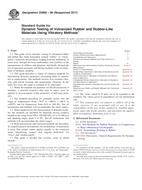
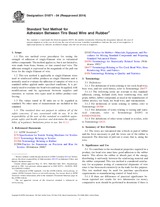 ASTM D1871-04(2014)..
ASTM D1871-04(2014)..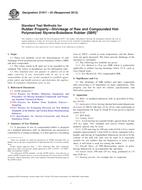 ASTM D1917-03(2012)..
ASTM D1917-03(2012)..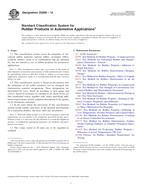 ASTM D2000-12
ASTM D2000-12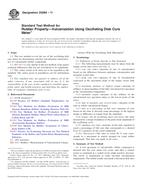 ASTM D2084-11
ASTM D2084-11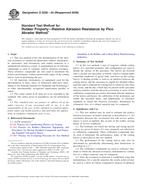 ASTM D2228-04(2009)..
ASTM D2228-04(2009)..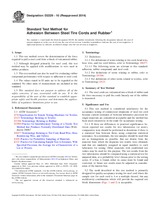 ASTM D2229-10(2014)..
ASTM D2229-10(2014)..
 Cookies
Cookies
